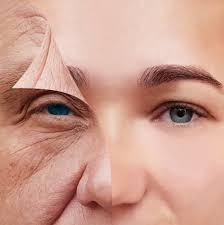The Ageing Process

The aging process is natural, but there are factors that can speed up the process. Genetics, diet, lifestyle, occupation, lifestyle & care.
As we age three things happen:
- Our skin sags.
- We lose volume.
- Our skin shows wear & tear.
Skin sags The skin begins to sag because it is no longer supported structurally, causing it to leave the appearance of sagging skin. We start to lose collagen & elastin, these are the fibrous connective tissue elements responsible for maintaining the firmness in our skin and are supportive tissues. As we get older, we lose the amount we have in our body by 1% a year.
Loss of volume As we age our tissues including our skin, fat, muscle, & bones start to atrophy.
The Bones As we age bones migrate, lose mass & spur major changes in your face. Facial bone loss can lead to retraction of the jawline, which emphasises jowls and an unstructured neck, widening the eye sockets giving the eyes a sunken appearance. The angle of the bones beneath the eyes brows decreases, which contributes to frown lines, droopy eyelids & crows feet. Women may start to see changes occur in young to middle age, but men do not typically suffer these effects until middle to old age.
The muscles When bones give way, the muscles follow behind, losing their volume, strength and elasticity. Laxness of facial muscles and loss of muscle mass are two major contributors to facial sagging, especially in the cheeks. Muscle weakness also causes droopiness around the brow and upper eyelids. It is also a major factor in the dreaded “turkey neck” caused by sagging skin underneath the neck and vertical bands of muscles loosened by gravity and time. The biggest changes typically occur when people reach 40’s and 50’s, but they can begin as early as the mid 30’s and continue into old age.
The fat Beginning in your mid 40’s facial fat starts to lose volume and drifts downwards settling around the chin, jaw & neck. Skin that was smooth and tight becomes loose and sagging, and features that were round may sink. Fat loss also makes skin thinner and more translucent, which can create discolouration’s as blood vessels just below the surface become mor prominent, even worse the fat that clusters in the lower face cause jowls around the neck and bagging around the chin. The cheeks tend to be one of the first parts of the face to change as we grow older. Over time, ligaments loosen and fatty tissue tends to drift down, making the cheeks appear flat and hollowed.
The skin Whilst the signs of aging appear on the surface, skin ageing takes place in every layer. Understanding the skins structure & ageing process as well as the signs of ageing is key to informing your choices about treatment & care.
The Epidermal layers The epidermis is the outermost layer of the skin & acts as a barrier to keep moisture in & protect your body from external toxins & bacteria. New skin cells form at the innermost layer & rise towards the surface of the skin where they die & shed off. As skin ages its cell turn over slows, as does its production of sebum & hyaluronic acid which are vital for the skins ability to retain moisture. The skin then becomes drier & rougher, & as a result. Fine lines & wrinkles appear.
The Dermal layers The dermal layers are the firm elastic middle layer of the skin. It’s structure mainly consists of collagen, Elastin, and connective tissues, & it is rich in blood vessels. From the age of 25 onwards, the skins collagen levels decrease by roughly 1% a year each year. This is paired with a decline in functional elastin and leads to a compromised structure, making fine lines & wrinkles more likely. A weaker structure also makes the skin prone to damage & broken capillaries, leading to reduced micro-circulation. The skin is then less efficient at delivering nutrition & oxygen to the surface, which leads to a decreased radiance enjoyed by youthful skin.
The Subdermal layers The innermost layers are responsible for storing energy whilst padding & insulating the body. Here the most notable changes are the reduction in the size & number of lipid-storing cells. This results in sagging skin & loss of volume, leading to deep wrinkles & hollow temples & cheeks.
Hyaluronic acid The body naturally produces hyaluronic acid, which helps lubricate our tissues. It plays a role in skin health, wound healing, bone strength and many other bodily systems & functions. The largest amounts are found in the skin, connective tissues & eyes. Its main function is to retain water to keep your tissues lubricated & moist. Hyaluronic acid has a variety of uses, many people take it as a supplement, but it is also used in topical serums, eye drops & injections.
